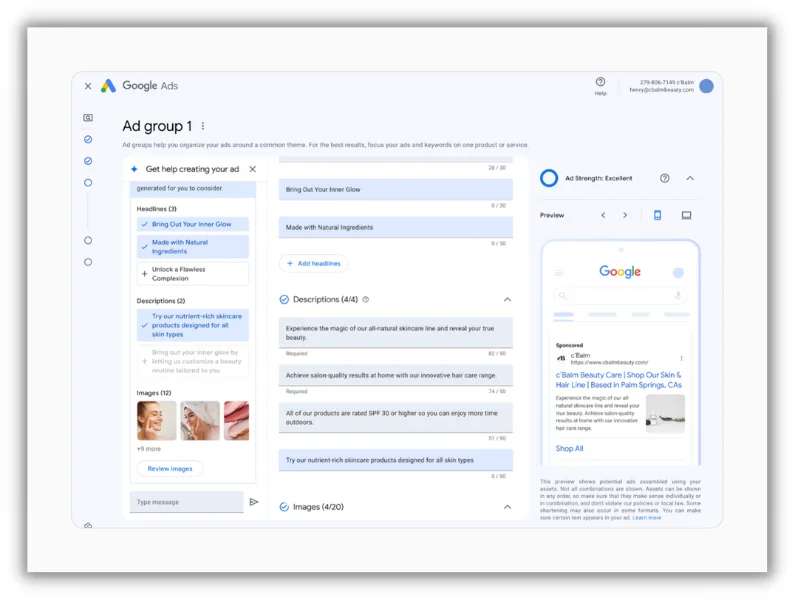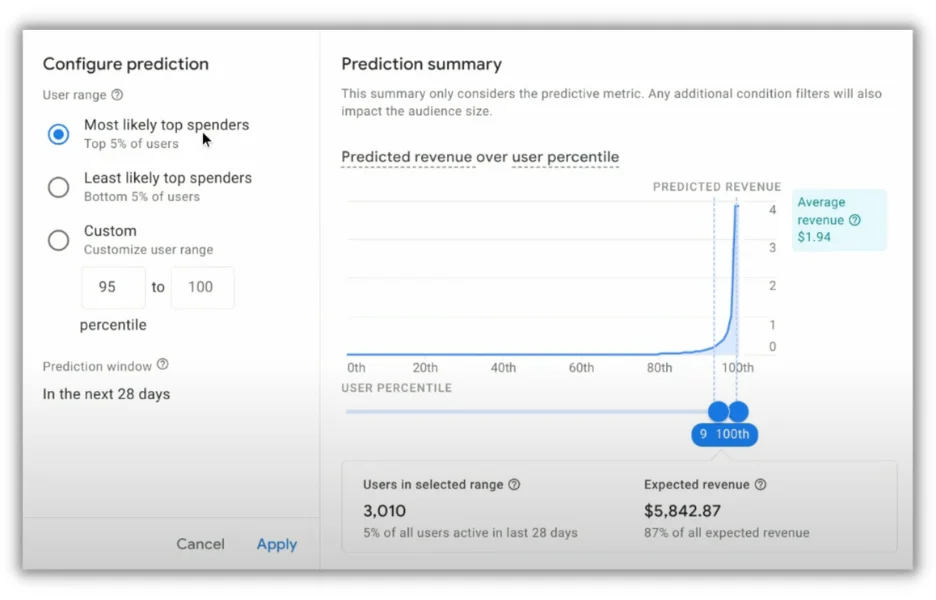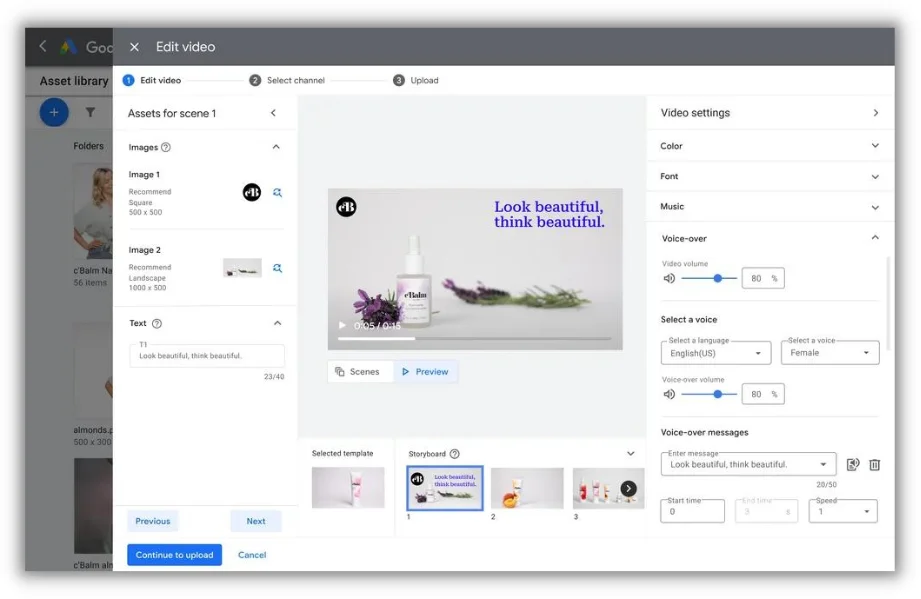PPC
8 Super-Helpful AI Features in Google Ads

Artificial Intelligence (AI) has become a buzzword in society, particularly with the widespread attention garnered by advanced AI platforms like ChatGPT in recent years. However, even before AI became a household term, it was already embedded in the fabric of digital marketing strategies through platforms like Google Ads.
Google has been a pioneer in harnessing AI to transform the advertising landscape, leveraging machine learning and automation to help businesses optimize their online presence and advertising performance.
In this article, we’ll explore helpful Google Ads AI features that can help you enhance your outcomes, forge stronger customer relationships, and deepen your marketing know-how.
Let’s delve into how these Google Ads AI features are purpose-built to amplify your success:
- AI-driven search campaigns
- Performance Max AI features
- Automatically created assets
- Conversational Experience in Google Ads
- Google Analytics 4 measurement enhancements
- Optimized targeting
- YouTube AI-powered creative tools
- App campaigns
AI features in Google Ads
Let’s take a closer look at the essential offerings that seamlessly incorporate AI to elevate your Google Ads experience.
1. AI-driven search campaigns
Leveraging the sophistication of machine learning, AI-driven search campaigns are now smarter than ever, fine-tuning bidding strategies, broadening match types, and honing ad relevance with incredible precision as it happens. This evolution means your targeting is not just effective—it’s strategic, maximizing your investment returns.
Over the years, the capabilities of broad match have significantly advanced, allowing you to refine your search ads campaigns further. By pairing broad match keywords with Smart Bidding and responsive search ads, you’re not just casting a wider net but also capturing a plethora of conversion opportunities that might have otherwise slipped through the cracks, thereby unlocking new avenues for ROI.

🛑 Want to improve your Google Ads results? Find out where to focus with a free, instant audit >> Google Ads Performance Grader
2. Performance Max AI features
By now, most digital marketers are familiar with Performance Max, a crucial tool in Google’s advertising suite. But are you fully aware of all its AI-driven features?
Performance Max stands apart for its ability to leverage the extensive range of Google’s advertising channels and resources, going beyond traditional search terms to identify opportunities for high returns on investment.
It’s engineered not just for broadening reach but for diving deep into previously unexplored audience segments and conversion opportunities.


At its core, Performance Max harnesses Google’s vast data resources to unearth potential customers who might otherwise remain hidden, tapping into new market segments and user interests. This capability is powered by sophisticated AI signals and machine learning, which analyze user behavior, preferences, and trends across the internet, offering a more nuanced and effective approach to targeted advertising.
3. Automatically created assets
This tool is a standout for enhancing search ad relevance. It crafts headlines and descriptions based on your ad’s context, like the landing page and existing ads, improving Ad Strength. Supporting multiple languages and soon integrating generative AI in the US and UK, it offers even more tailored content.


4. Conversational Experience in Google Ads
Engage in natural language conversations with Google Ads to create effective keywords and assets. Just input your website URL, and the AI suggests campaign elements, which you can modify. In beta testing for English in the US and UK, it’s a significant time-saver and a source of creative inspiration.
⚡️ Is your Google Ads account set up for success? Download now >> The Last Guide to Google Ads Account Structure You’ll Ever Need
5. Google Analytics 4 measurement enhancements
Incorporating AI, Google Analytics 4 stands as a robust measurement tool that can automatically extract insights and anticipate future consumer trends. This predictive ability is particularly valuable for advertisers looking to refine their campaigns for optimal performance and gain a more nuanced understanding of their consumer base.
To illustrate this, I’ve crafted a video detailing how reports within GA4 can effectively integrate purchase data and revenue predictions.


This resource is designed to empower advertisers with the knowledge to leverage GA4’s advanced reporting features to their fullest potential, ensuring that every campaign is backed by data-driven strategies and a clear view of expected financial outcomes.
6. Optimized targeting
Optimized targeting with AI represents a leap forward in audience solutions. It doesn’t just work with the top audiences you already know; it also harnesses signals from across Google’s entire ecosystem to direct you to new, relevant customers. These customers are selected based on their likelihood to convert, aligning with your specific campaign objectives.
Your understanding of your customer base and their value is crucial—it guides the AI to make smarter, more relevant matches. When you blend this understanding with Google’s AI capabilities, you’re not just expanding your reach; you’re also fine-tuning it for relevance, which can significantly enhance your ROI.
This synergy between your insights and Google’s technology paves the way for more efficient campaigns that don’t just aim for reach but aim for the right kind of reach.
7. YouTube AI-powered creative tools
AI-powered creative tools on platforms like YouTube are revolutionizing the way video ads are created and enhanced. This is especially relevant given the diverse ways audiences consume content. Whether it’s scrolling through Shorts, watching the latest drop from a favorite creator on the TV screen, catching an upcoming NFL game, or tuning into live events like the Oscars, YouTube is where the world watches.
In this landscape of varied viewer habits, connecting with audiences on YouTube is easier than ever. Using AI-driven tools, you can generate engaging video ads or enhance existing ones with options like trimming, flipping, and adding voiceovers. These features ensure your ads are not only high-quality but also perfectly tailored to match the viewing preferences of your audience.


You can also launch targeted video campaigns tailored to your specific goals. For instance, Video reach campaigns are great for building awareness, Video view campaigns are designed for driving consideration, and Video action campaigns are aimed at prompting action. This strategic approach, using AI-powered tools and campaign types, helps you not only reach your audience on YouTube but engage with them in the most effective and relevant ways, regardless of how they interact with the platform’s diverse content.
8. App campaigns
App campaigns, specifically tailored for mobile applications, utilize AI to streamline the promotion of apps across Google’s most prominent channels within a single campaign. They are adept at identifying and retaining high-value app users, as well as re-engaging those who already use your app.
Whether you’re marketing a retail app or rolling out a new game, App campaigns are your go-to strategy for connecting with the most valuable users. By simply setting your goals, these campaigns leverage the full might of Google AI to effectively promote your app across vast channels, all from one consolidated campaign effort.
To take this further, consider trying AI-powered solutions like App campaigns for engagement and tROAS (Target Return On Ad Spend) for ad revenue. These tools are excellent for re-engaging existing customers and exploring new avenues to grow revenue. They represent the cutting edge in digital advertising technology, enabling you to maximize both reach and profitability with unprecedented ease and efficiency.
Find the right Google Ads AI-powered feature for your business
In conclusion, the integration of AI in Google Ads represents a significant advancement for digital marketers. It multiplies your expertise, allowing you to augment your creativity and knowledge with powerful, data-driven insights.
This technology enables you to market faster and more effectively, meeting customers precisely where they are, even in the most unpredictable scenarios. Most importantly, it drives reliable and strong ROI, unlocking new avenues for growth.
By leveraging AI in your Google Ads campaigns, you’re not just keeping pace with the digital marketing landscape; you’re setting the bar higher, transforming challenges into opportunities for success and growth.












